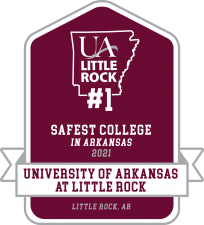In the event of a crisis incident, the UA Little Rock Police Department will notify the vice chancellor for finance and administration, who will convene the Emergency Response Team (ERT). The ERT is comprised of members from UA Little Rock administration and selected department heads. The core members of the team are as follows:
- Chancellor and/or designee(s)
- Vice Chancellor for Finance & Administration and/or designee(s)
- Executive Vice Chancellor & Provost and/or designee(s)
- Vice Chancellor for Student Affairs and/or designee(s)
- Vice Chancellor for Advancement and/or designee(s)
- Chief Information Officer and/or designee(s)
The ERT will be assembled to address the immediate crisis and disband when the crisis has ended and normal operating systems are in place.
The ERT’s role is to support the emergency field operations from the Emergency Event Support Center (EESC). The EESC will be located in the Administration South building or an alternate location selected by the team.
The ERT will not respond to the scene nor will they manage the initial response to an incident. It is the responsibility of emergency responders at the scene to isolate, contain, and neutralize the incident.
The ERT will be responsible for managing and directing the activities of the various departments that will be involved in emergency response and recovery. During the initial stages of the crisis, the ERT will be responsible for providing resources for field operations when requested. It is the responsibility of the person(s) in charge of the scene to communicate with the ERT to provide status reports and to inform the team as to what resources are needed.
Emergency events are defined as those situations which have the potential to cause injury or loss of life, major campus disruptions, and property damage or loss. The following are examples of events that may be designated as an emergency event that would activate the ERT. These are merely examples and do not constitute a comprehensive list of possible crisis events.
- Fire, explosion, hazardous substance spill or release, or other damage to campus property which may require closing the site temporarily or permanently.
- Long term failure of utility systems to the extent that one or more buildings are without service.
- An event resulting in or with the potential for fatalities or serious injuries.
